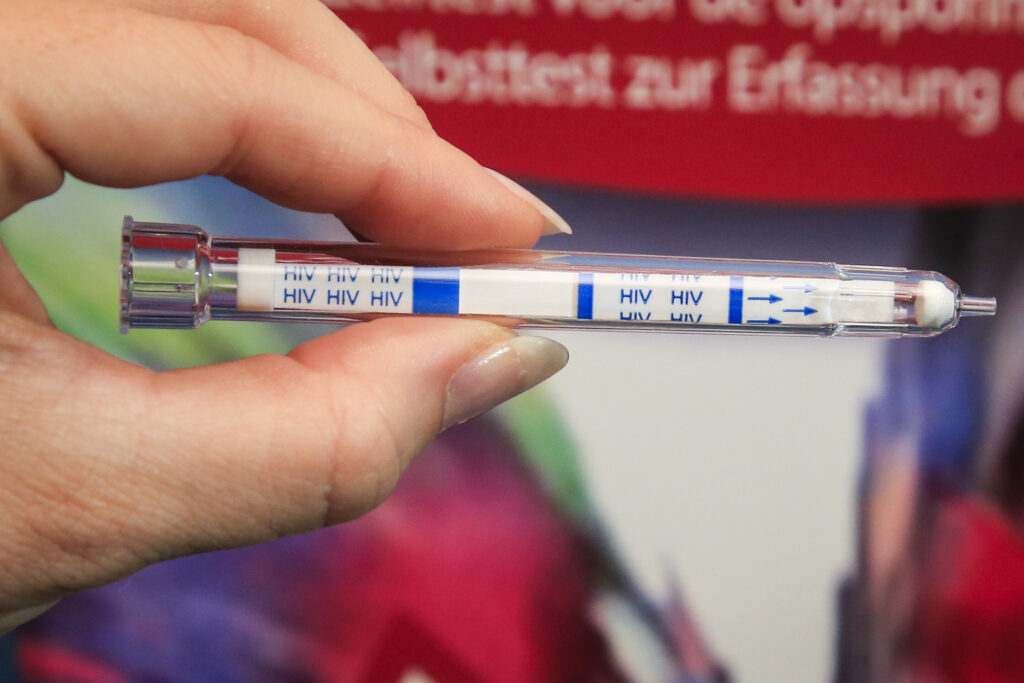The number of HIV diagnoses in Belgium has increased for the third consecutive year – a worrying trend as the disease remains incurable.
A total of 665 people were diagnosed with HIV last year, latest figures from the health institute Sciensano showed. This marks a 13% rise compared to 2022. An estimated 18,700 people in Belgium had HIV at the end of 2023.
Sciensano scientist Jessika Deblonde told VRT NWS that "HIV remains an incurable disease that requires lifelong medication." The virus, which attacks the immune system, is mainly transmitted through unprotected sex. But people can also contract it through infected blood, for example a blood transfusion or an infected hypodermic needle.
An increase is noted in both men and women, Belgians and non-Belgians. The strongest rise is among men who have sex with men (up by 16% to 297 cases). Most diagnoses were men aged between 30 and 39 and men account for 70% of all diagnoses.
Among heterosexuals, the figure rose to 328 new cases (+ 13%). Sub-Saharan African nationals accounted for 27% of diagnoses, while among heterosexual women, this group accounts for 53% of all cases. Half of people from sub-Saharan Africa were infected before coming to Belgium.
Deblonde explained that no longer are just two major groups most affected – Belgian men who have sex with men, and heterosexual people from Sub-Saharan Africa. "We see more diversity in the profile of persons with HIV. Certain groups slip through the cracks, making prevention more difficult."
Understanding the rise
The three-year rise can be explained by the large drop in diagnoses during the first year of the pandemic: the figure went from 674 diagnoses in 2019 to 501 in 2020, meaning the starting point for the rise was relatively low.
But as well as diagnoses being skewed by the pandemic, Deblonde noted that prevention remains difficult as people are not always aware that they are at risk of HIV. As a result, more people are not using condoms, which remains a crucial prevention tool, during intercourse.
The use of PrEP – a preventive drug that can prevent infection that has been available in Belgium's 12 HIV reference centres since 2017 – is on the rise. It can be taken daily or only during periods of increased risk, and last year there were 8,727 annual users of the drug, 26% more than in 2022. However, it is still not known enough among those at risk.
"High-risk groups are largely reimbursed, but still pay €12-€15 for 30-90 pills." However, because the risk profile has widened that approach falls short, as going to such a centre is a big step for many people. "We therefore advocate for wider availability," said Deblonde.
Finally, offering sex and relationship education through schools and other information channels remains crucial. "We have to look beyond the traditional risk groups."
Related News
- Significantly more women off work due to medical reasons than men
- Stress found to be root cause of most sick leave for civil servants
Diagnosis is key for infected people: while HIV remains an incurable disease, medication can ensure a person with a timely HIV diagnosis has a good life expectancy. The appropriate medication can also suppress HIV, making it undetectable and preventing people from transmitting the virus to others.
If HIV is not treated properly, the virus causes AIDS in the long term, at which point a person's immune system is so weakened that it no longer functions. In Belgium, 92 people were diagnosed with AIDS in 2023 – a figure considered to be an underestimate. Between 2020 and 2022, eight people in Belgium died of AIDS a year after diagnosis.

